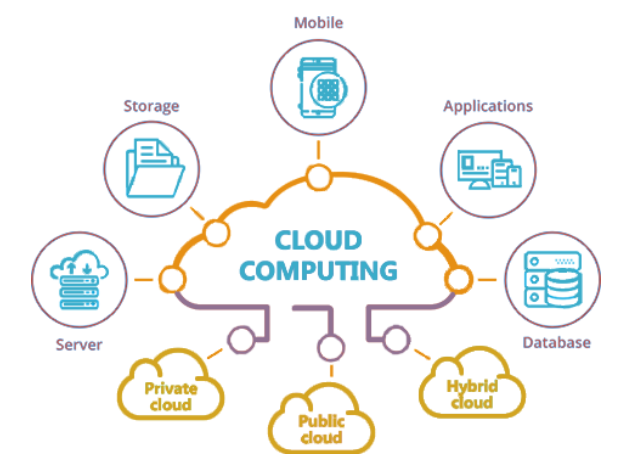With the development of the global network and the growth of the amount of data that needs to be stored, processed, and transmitted, it became necessary to perform existing tasks.
The Technology of Cloud Computing
Under cloud computing is usually understood as providing the user with computer resources and capacities in the form of Internet service. Thus, computing resources are provided to the user in a “pure” form, and the user may not know which computers are processing his requests, which operating system is under control of this, and so on. By cloud technologies we mean a model of a system of procedures that provide a targeted change in material and ideal (virtual) objects.
Clouds are often compared to mainframes, finding much in common between them. The fundamental difference between a cloud and a mainframe is that its computing power is theoretically unlimited. The second fundamental difference is that simply put, mainframe terminals served only for interactive user interaction with a task launched for processing. In the cloud, the terminal itself is a powerful computing device, capable not only of accumulating intermediate information but also directly managing the global system of computing resources.
This technology is used to solve scientific and mathematical problems that require significant computing resources. It is known that grid computing is also used for commercial purposes. For example, they perform some of the laborious tasks associated with economic forecasting, seismic data analysis, and the development and study of the properties of vaccines and new drugs. Indeed, grid computing and the cloud have many similarities in architecture and principles. However, the cloud computing model is considered more promising today due to a much more flexible platform for working with remote computing resources.
The Main Advantages and Disadvantages of Cloud Computing
Cloud computing can be deployed directly to the cloud using vendor-supported tools as well as programming languages. At this level, there is no possibility of managing the infrastructure, but only deployed applications, as well as, within certain limits, the configurations of the application-hosting environment. The main advantages of cloud computing are:
- Cloud computing, in addition to the existing security requirements that were present in data processing centers, have their own specifics.
- Self-service is the ability for consumers to order additional resources automatically using the control system (without interacting with the provider’s support service).
- Wide network access is the ability to access resources through standard network protocols for a wide range of devices (smartphones, tablets, desktop computers).
- A new type of threat has become accessible through the global network to the management of computing power.
- Use identical applications and operating systems. There is a high risk of remote hacking or virus infection.
- Pooling (pooling) of resources dynamic allocation of the provider’s equipment capacity to serve the actual needs of consumers. Transparency of resource allocation for customers (with the possibility of high-level specifications, for example, country and information center where the application is hosted).
The main disadvantages of cloud computing are:
- The transparency of data changes and the differentiation of access control at the system level is considered one of the most important security criteria.
- Cloning and migration between physical servers of virtual machines, their stop or restart are carried out in a short time. This property negatively affects the development of an integrated security system.
- This threat is removed by implementing a security system not only inside each VM but also at the hypervisor level.

